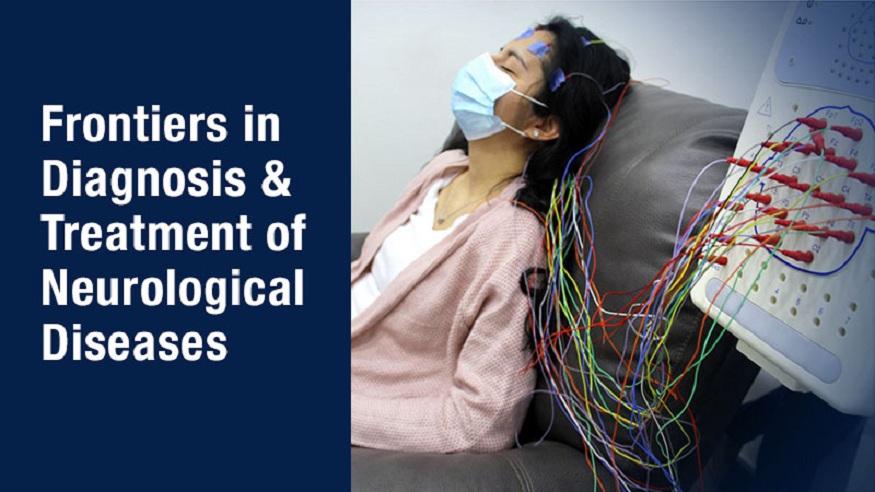
Pupilometer Revolution: Advancing Neurological Diagnosis
A neurological diagnosis is made by identifying a condition that relates to the central nervous system or peripheral nerves (e.g., brain and spinal cord). This often includes clinical assessment, patient’s medical records, and various types of testing.
Neurological assessment involves pupillary evaluation as changes in the size and reactivity of the pupil can often convey useful data regarding the state of health of the nervous system.
Traditional methods of pupillary assessment involve observing the size, shape, and reactivity of the pupils manually, often with the use of the naked eye. These methods can be useful but may not yield accurate information all the time. This is where the use of pupilometers comes in.
The pupilometer is a specialized device that measures the size of the pupils as well as the speed and range of movement caused by stimulation with light. In other words, these devices employ infrared or visible light for illumination of the pupils, with corresponding sensors for measuring pupillary characteristics.
The development of pupilometers has completely improved how pupils are examined, offering objective, precise, and consistent data. Their application has considerably improved the accuracy and speed of measuring pupils in different clinical settings.
The key features of Pupilometers include:
- Accuracy, and precision of pupil detection.
- Real-time monitoring capabilities
- The adoption of advanced technologies (such as artificial intelligence) for integration.
Collectively, these and many others enhance the degree of precise diagnosis as well as increased efficacy of pupillary assessment.
Neurological Pupil Index
The Neurological Pupil Index, or NPi, is an algorithm that removes subjectivity from the pupillary evaluation. A patient’s pupil measurement (including variables such as size, latency, constriction velocity, dilation velocity, etc.) is obtained using a pupillometer, and the measurement is compared against a normative model of pupil reaction to light and automatically graded by the NPi on a scale of 0 to 5. Pupil reactivity is expressed numerically so that changes in both pupil size and reactivity can be trended over time, just like other vital signs.
How NPi is Calculated
Each NPi measurement taken is rated on a scale ranging from 0 to 5. A score equal to or above 3 means that the pupil measurement falls within the boundaries of normal pupil behavior as defined by the NPi.
However, a value closer to 5 is more normal data than a value closer to 3. An NPi score below 3 means the reflex is abnormal, i.e., weaker than a normal pupil response, and values closer to 0 are more abnormal than values closer to 3. A difference in NPi between Right and Left pupils greater than or equal to 0.7 may also be considered an abnormal pupil reading.
Advantages of Pupilometer-based Evaluation
1.Efficiency in Emergency Settings:
Time is of the essence in emergency cases. Pupilometer-based assessments are timely and easy tests of pupillary responses. Quick diagnosis is vital when it comes to identifying stroke severity as well as traumatic brain cases so that one may be able to offer the patients timely and appropriate treatment.
2. Detection of Small Changes:
In this regard, objective measures help detect minute changes in pupil size and/or reactivity, which might otherwise escape routine observation. This sensitivity is particularly important in monitoring neurological conditions where early signs may be subtle.
Applications in Neurological Diagnosis
pupilometer-based evaluations have diverse applications used to diagnose neurological conditions like traumatic brain injuries, stroke, Alzheimer’s disease, etc.
3. Traumatic Brain Injuries:
Healthcare professionals can know how a patient’s neurological status would be worsened or improved by conducting pupilometer-based evaluations allowing them to continue tracking pupillary reactions all through.
2. Stroke:
Pupillometers help identify stroke-related problems as soon as they appear including excessive intracranial pressure or cerebral edema. They can also assist further in stroke patients supplementary to other neuroimaging studies so as to enhance the diagnosis.
3. Neurological Disorders (e.g Epilepsy, Multiple Sclerosis):
Pupillometer-based measures that follow seizure-induced changes in pupillary functions may prove helpful and reveal more information concerning epilepsy effects. These tests can also be used in detecting dysfunction of the optic nerves, such as optic neuritis that occurs during multiple sclerosis.


